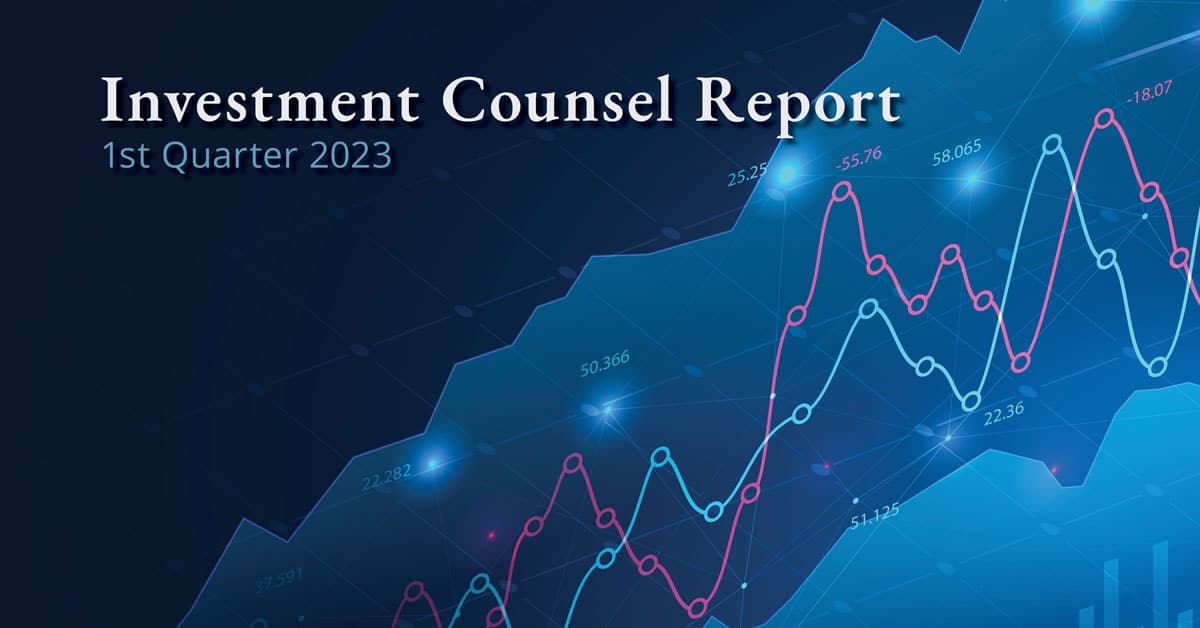The US stock market began the year 2025 precariously – with high volatility and ultimately negative returns for the first three months. While new government agendas and fiscal policies are being unrolled and the economy at large adjusts, there was not much change in corporate earnings reports as yet.

Market Summary
Starting off the calendar year 2023, stock markets were generally positive. Despite some turbulence at the end of the period, stock investors generally shrugged off recession concerns and Federal Reserve angst to support higher stock prices.
The large-company stocks of the S&P 500 Index rose +7.5% for the first three months. Large stocks gained ground at a more pronounced clip than smaller company stocks. The Russell 2000 Index only returned +2.7% over the same period, leaving a healthy gap between these groupings. Much of the explanation to this gap can be found with the FAANG (Facebook, Amazon, Apple, Netflix and Google) stocks surging ahead, while the smaller stock indices were weighed down with heavy small banking weakness (more on this below).
Foreign based stocks that comprise the EAFE Index rose a healthy +8.6%. International stocks have been performing relatively well in recent quarters, and still sport generally cheaper valuations.
Aurora Perspective
Often in these letters to clients, we preach against the concepts of short-term focus and market timing temptation. True to form, we will steer our efforts and our words here toward our ability to identify Growth At a Reasonable Price (GARP) stock characteristics, and away from short-term market forecasting. However, for context, there should be consideration given to some current challenges and issues that might bring some volatility to markets in the near term.
Rising interest rates for companies that need to borrow to sustain themselves represent rising costs. For financial institutions that exist by earning a “spread” by borrowing one day to lend out on another, rising rates are a particular challenge. Additionally, regulatory burdens and increased competition for funding place stress on banks as a resource for businesses seeking growth capital. So in addition to the broader concerns we have highlighted previously around soaring US Government borrowing and Federal Reserve quantitative tightening, worsening conditions for financial companies might put a dent in corporate growth investments for a time.
While hopefully not being too redundant, the struggles of the Federal government to balance its yawning budget are a somewhat separate issue and set of concerns for the stock market. The political aspect of facing real world deadlines over the Federal Government’s debt ceiling and the wrangling of policies to keep outlays funded has in the past been very problematic and has led to high volatility in stock prices. While typically short lived, these bouts can be discomforting when encountered.
Aurora Outlook
With all this said, Aurora’s discipline and long-term investment focus has invested through all manner of cycles since its inception in 1995. There are always companies that find ways to grow through recessions, companies that increase productivity and profits through innovation, and most always stocks selling at cheaper prices than their earnings might warrant. We remain fixed on identifying those stocks that have the potential to grow earnings over time enough to compensate investors for the risks in navigating uncertainty. Client objectives that call for growth in their Investment Policy parameters have been met by maintaining a consistent exposure to the stock market and sound diversification principles. Despite the bumpy ride, long term success is achievable.
